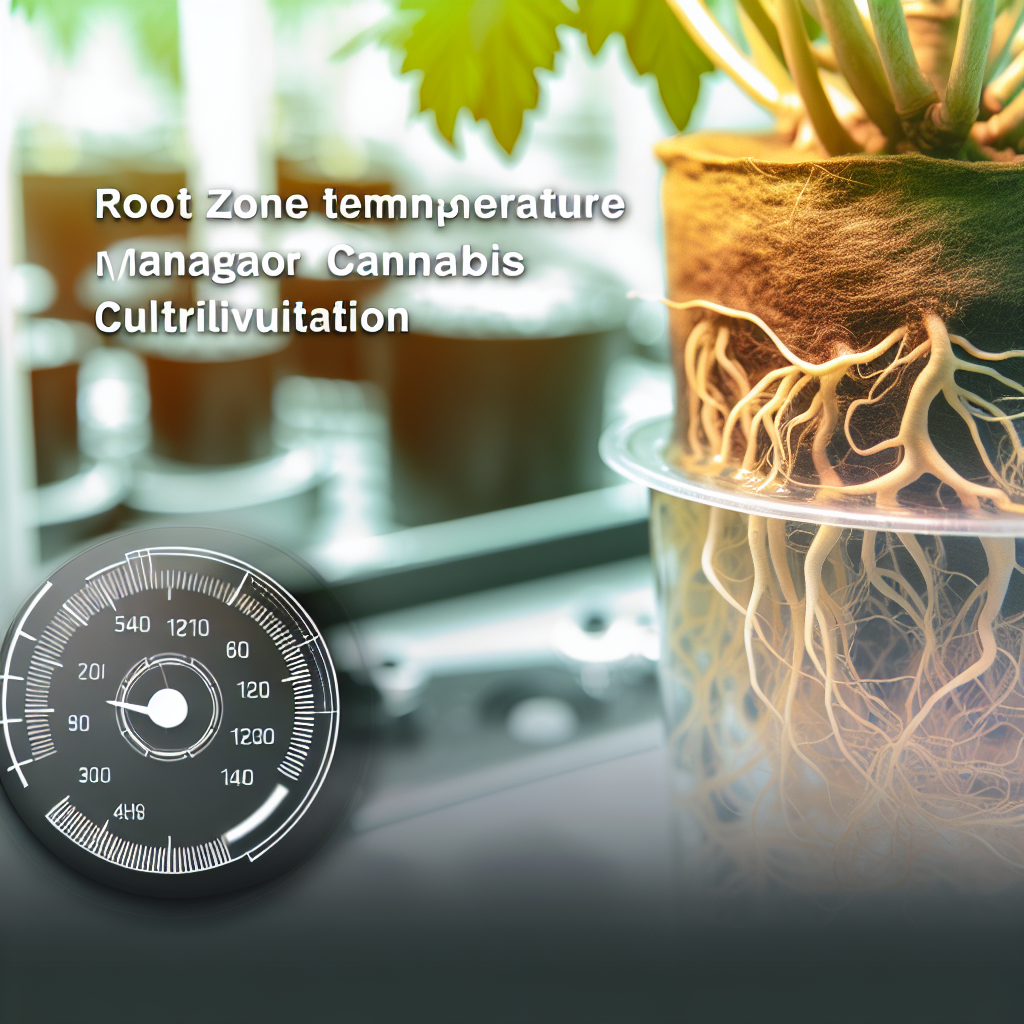Root Zone Temperature Management for Cannabis Cultivation
Introduction: Unlocking Maximum Growth Through Root Zone Temperature
Successful cannabis cultivation requires carefully balancing environmental factors such as light, humidity, and airflow. However, one often-overlooked element—root zone temperature—can be the difference between thriving plants and disappointing yields.
The root zone, or rhizosphere, is where cannabis roots absorb nutrients, water, and oxygen while interacting with beneficial microbes. When the temperature is properly managed, plants experience faster growth, better nutrient uptake, and improved disease resistance.
Research shows that the optimal cannabis root zone temperature is between 65°F and 75°F (18°C to 24°C). Straying from this range can cause nutrient deficiencies, slow metabolism, and increase vulnerability to diseases like root rot. Unlike ambient air temperature, which is easier to control, the root zone temperature is affected by factors like floor insulation, hydroponic water temperature, and heat dissipation in soil.
In this article, we’ll examine the science-backed importance of root zone temperature management and provide practical solutions for optimizing plant health and yield.
The Science Behind Root Zone Temperature and Cannabis Growth
Scientific studies confirm the direct impact of root zone temperature on plant metabolism, nutrient absorption, and microbial activity.
A study published in the Journal of Plant Nutrition found that nutrient uptake is most efficient within 68°F to 72°F (20°C to 22°C). Below this range, absorption of nitrogen, phosphorus, and potassium diminishes, leading to stunted growth (Marschner, 2012).
Microbial activity is also influenced by root zone temperature. Research in Horticultural Science revealed that beneficial organisms like mycorrhizal fungi and nitrogen-fixing bacteria thrive in moderate root temperatures, supporting root development. If the root zone becomes too cold, microbial activity slows, limiting nutrient availability. If it becomes too hot (above 75°F or 24°C), dangerous pathogens like Pythium flourish, increasing the risk of root rot (Xu & Huang, 2010).
Hydroponic growers face unique challenges. A study in the American Journal of Botany found that root temperatures above 77°F (25°C) cause dissolved oxygen levels in water to drop, leading to root stress and disease susceptibility (Soffer & Burger, 1988). This makes chillers and water temperature control essential for hydroponic systems.
By maintaining root temperatures in the optimal range, growers can enhance plant health, improve nutrient absorption, and minimize stress-related issues.
Practical Strategies for Maintaining the Ideal Root Zone Temperature
1. Use Insulated Pots and Containers
For soil or soilless growers, insulated pots help maintain stable root temperatures by reducing heat loss in cold climates and heat gain in warm environments. Fabric pots also improve airflow and prevent temperature fluctuations.
2. Heat Mats for Cold Environments
In colder climates, electric heat mats placed under containers can help regulate root temperatures. These mats are especially useful for young plants during early vegetative growth when warm root zones enhance root expansion.
3. Coolers and Chillers for Hydroponic Setups
Since hydroponic systems are highly vulnerable to temperature fluctuations, water chillers or coolers can help maintain water between 65°F and 70°F (18°C to 21°C). This ensures consistent oxygenation and prevents hypoxia, which can stress roots and invite pathogens.
4. Mulching for Soil-Grown Plants
Applying organic mulch (such as straw, wood chips, or cover crops) around cannabis plants helps regulate soil temperature, reduce evaporation, and improve microbial activity.
5. Smart Environmental Sensors for Precision Control
Advanced growers use temperature sensors and automated climate controllers to track and adjust root zone temperatures in real-time. Smart systems integrate heaters, fans, and chillers to stabilize conditions across the grow space.
6. Elevate Pots to Avoid Cold Floors
If growing indoors on a concrete or tile floor, elevate containers using pallets or insulating foam. Cold floors can draw heat away from the root zone, slowing plant metabolism and nutrient absorption.
Conclusion: The Key to Healthier, Higher-Yielding Cannabis Plants
Root zone temperature is a critical but often-overlooked factor in cannabis cultivation. Research shows that maintaining a temperature between 65°F and 75°F (18°C to 24°C) leads to optimal growth, nutrient absorption, and disease resistance.
By applying science-backed temperature management techniques—such as insulating containers, using heat mats, incorporating cooling systems, and automating climate controls—growers can unlock the full genetic potential of their cannabis plants.
Whether you’re a home grower or a large-scale producer, keeping root temperatures stable will result in stronger, healthier plants and improved yields. Start optimizing your root zone temperature today and watch your cannabis thrive!
## References
– Marschner, P. (2012). *Marschner’s Mineral Nutrition of Higher Plants (3rd edition)*. [ScienceDirect](https://www.sciencedirect.com/book/9780123849052/marschner’s-mineral-nutrition-of-higher-plants).
– Xu, Y., & Huang, B. (2010). “Effects of root-zone temperature on plant growth and bacterial populations in soilless culture systems.” *Horticultural Science, 45(2), 284-290.* [ASHS Journal](https://journals.ashs.org/hortsci/view/journals/hortsci/45/2/article-p284.xml).
– Soffer, H., & Burger, D. W. (1988). “Effects of dissolved oxygen in hydroponic solutions on the formation and growth of adventitious roots.” *American Journal of Botany, 61(6), 431-436.* [Oxford Academic](https://academic.oup.com/aob/article/61/6/431/206411?login=false).
Concise Summary:
Maintaining the optimal root zone temperature between 65°F and 75°F (18°C to 24°C) is crucial for cannabis cultivation. This temperature range promotes nutrient absorption, beneficial microbial activity, and overall plant health, leading to stronger plants and higher yields. Growers can employ various strategies, such as using insulated pots, heat mats, cooling systems, and smart sensors, to precisely control root zone temperatures and unlock the full potential of their cannabis crop.




